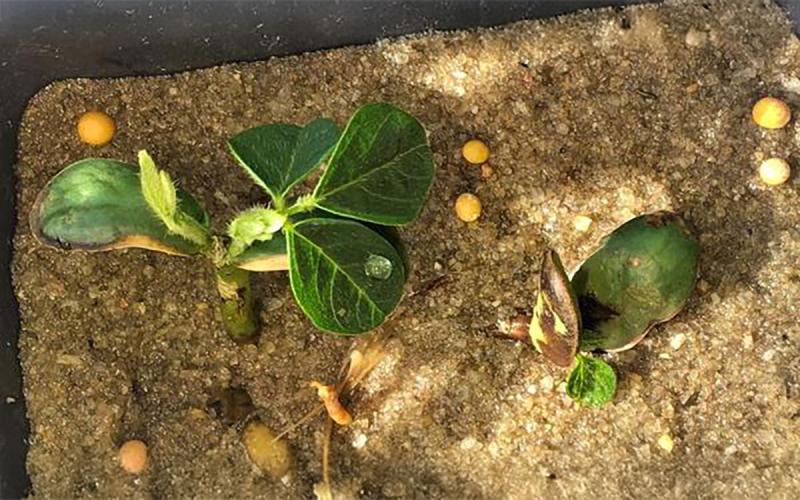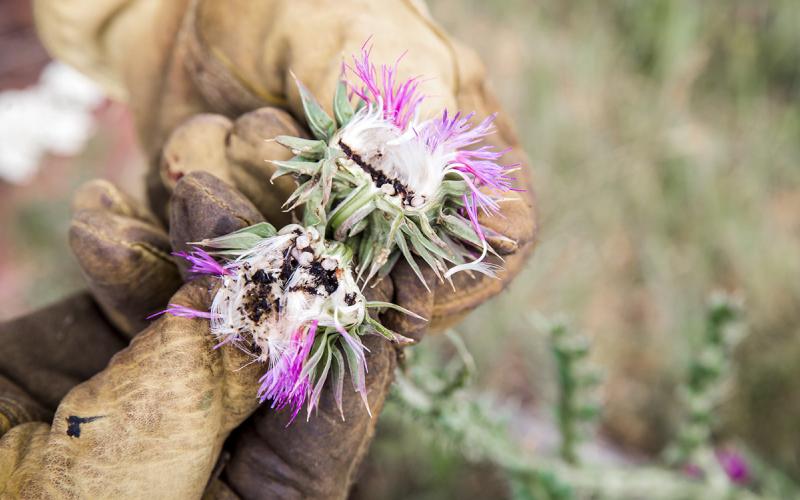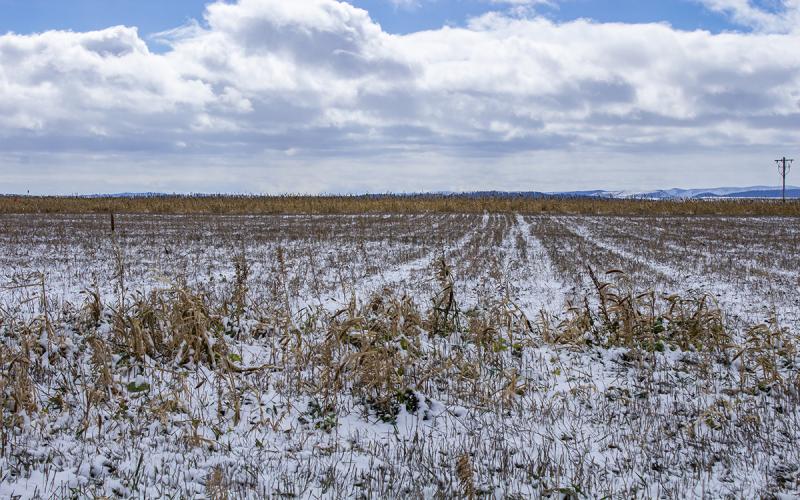Written collaboratively by Eric Jones, Philip Rozeboom, Jill Alms, and David Vos.
Farmers across South Dakota have been battling excessive wind early in the planting season and now widespread rainfall. Planting the crop seed usually takes priority, with the intent to follow up with a preemergence herbicide application once conditions become favorable within a few days. However, with wind speeds exceeding 20 miles per hour, followed almost immediately by at least 1 inch of rain, preemergence herbicide application may be further delayed until after Memorial Day. So what can and should be done to manage weeds?
Regardless of the crop that was planted, scout fields to determine if crop plants and/or weeds have emerged. Emergence information of either the crop or weed will determine how the preemergence herbicide in possession can be applied.
Corn
Many preemergence herbicides can be applied to emerged corn; commonly referred to as early postemergence. If a preemergence herbicide was applied to early planted corn, weeds may have emerged through the herbicide if no rainfall has occurred. However, the herbicide will still provide residual activity on later emerging weeds.
Soybean

Some preemergence herbicides cannot be applied to emerged soybean. Such herbicides include: flumioxazin (Valor), metribuzin (Tricor, Mauler, many), and sulfentrazone (Spartan, component of Authority products). These herbicides cannot be applied to emerged soybean, as injury or plant death can occur (Figure 1). Other herbicides belonging to Group 15, such as acetochlor (Warrant), dimethenamid (Outlook), S-metolachlor (Dual Magnum), and pyroxasulfone (Zidua) can safely be applied to emerged soybean. If weeds are already emerged, another herbicide will need to be included in the application, as the Group 15 herbicides do not have foliar activity.
Since many herbicides are sold as premixtures; refer to the herbicide label to determine what active ingredients are present. The label will also provide information on what application timings are safe for the crop. If the preemergence herbicide in possession cannot be applied due to emerging soybean, an early postemergence herbicide application may be needed. If an appropriate soil residual herbicide is added to the application, later-emerging weeds will be managed as well.
Scouting to determine if crops and/or weeds have emerged is critical to ensure effective and safe application of preemergence herbicides in possession. The most-recent South Dakota Pest Management Guides are great resources for product tradenames, herbicide active ingredients, application timings, and weeds controlled with specific herbicides. Always refer to herbicide labels before application.


